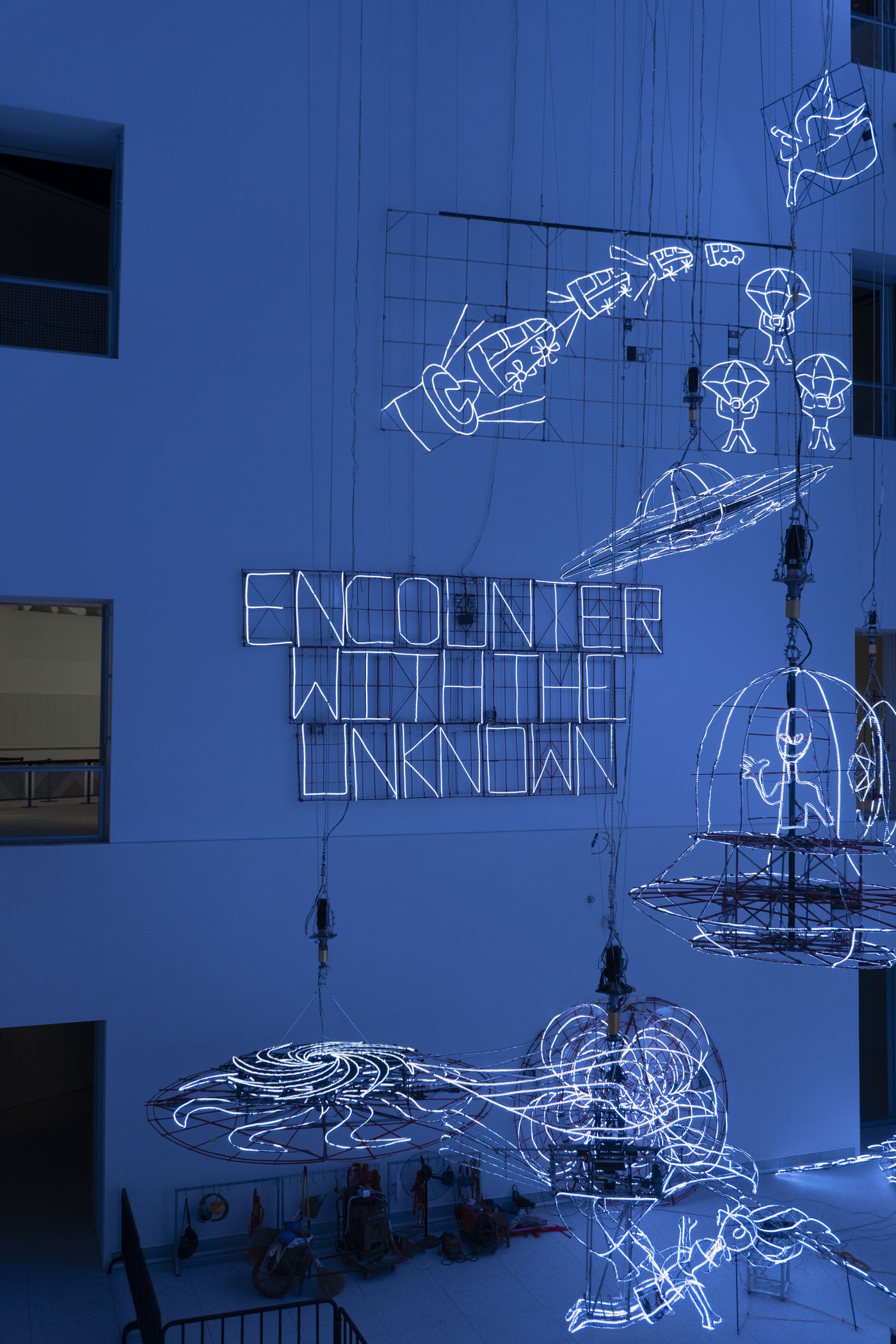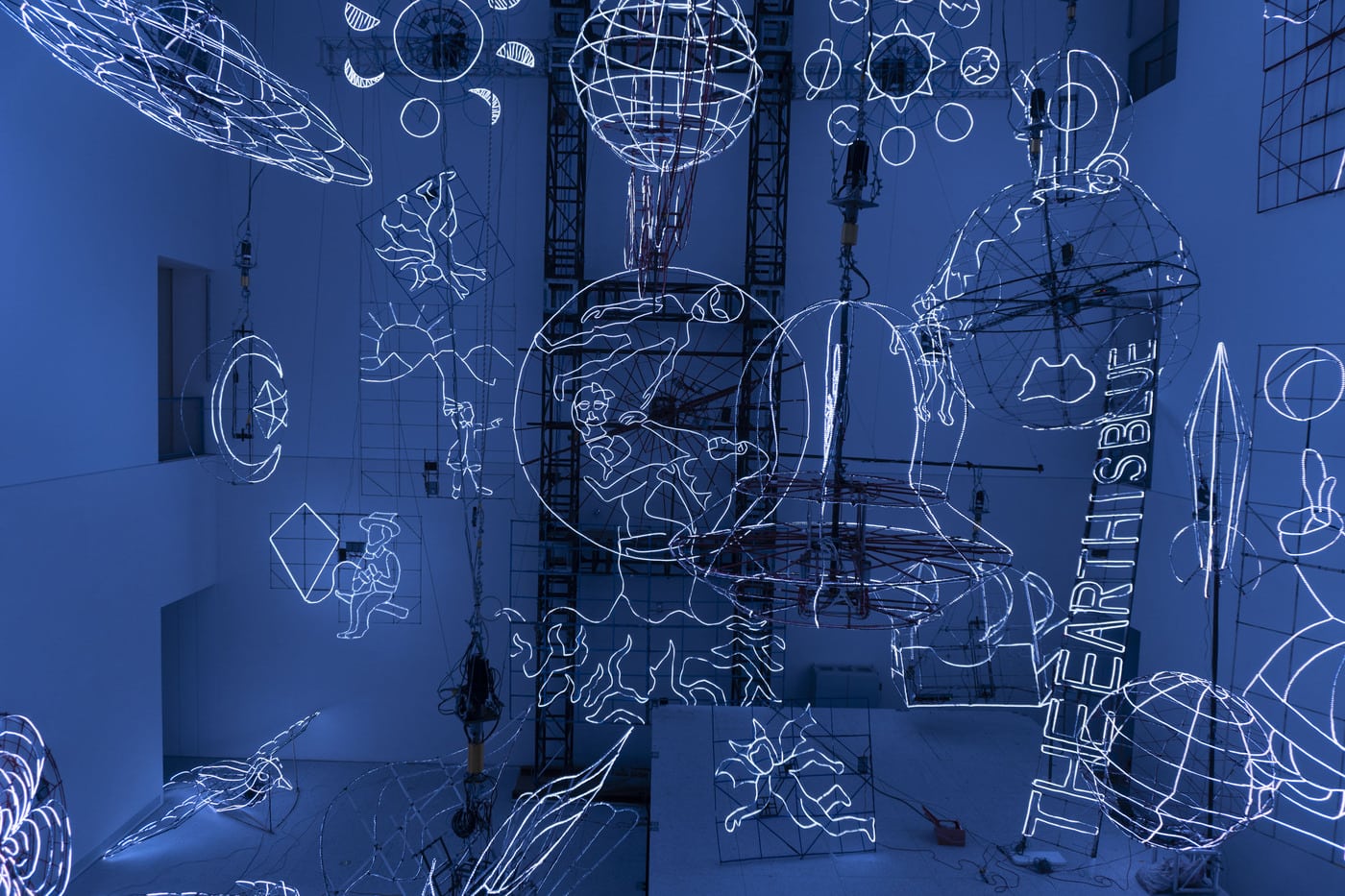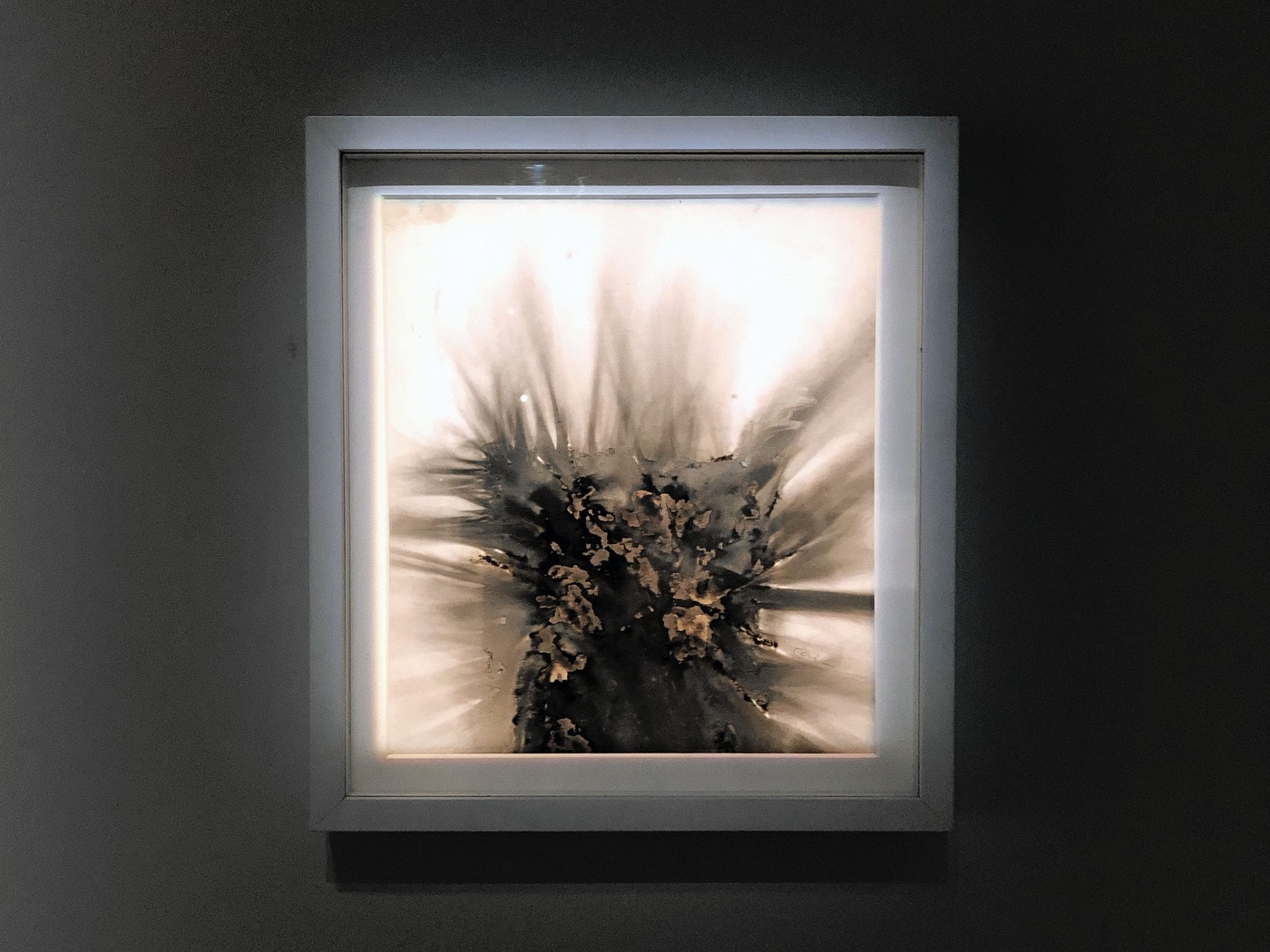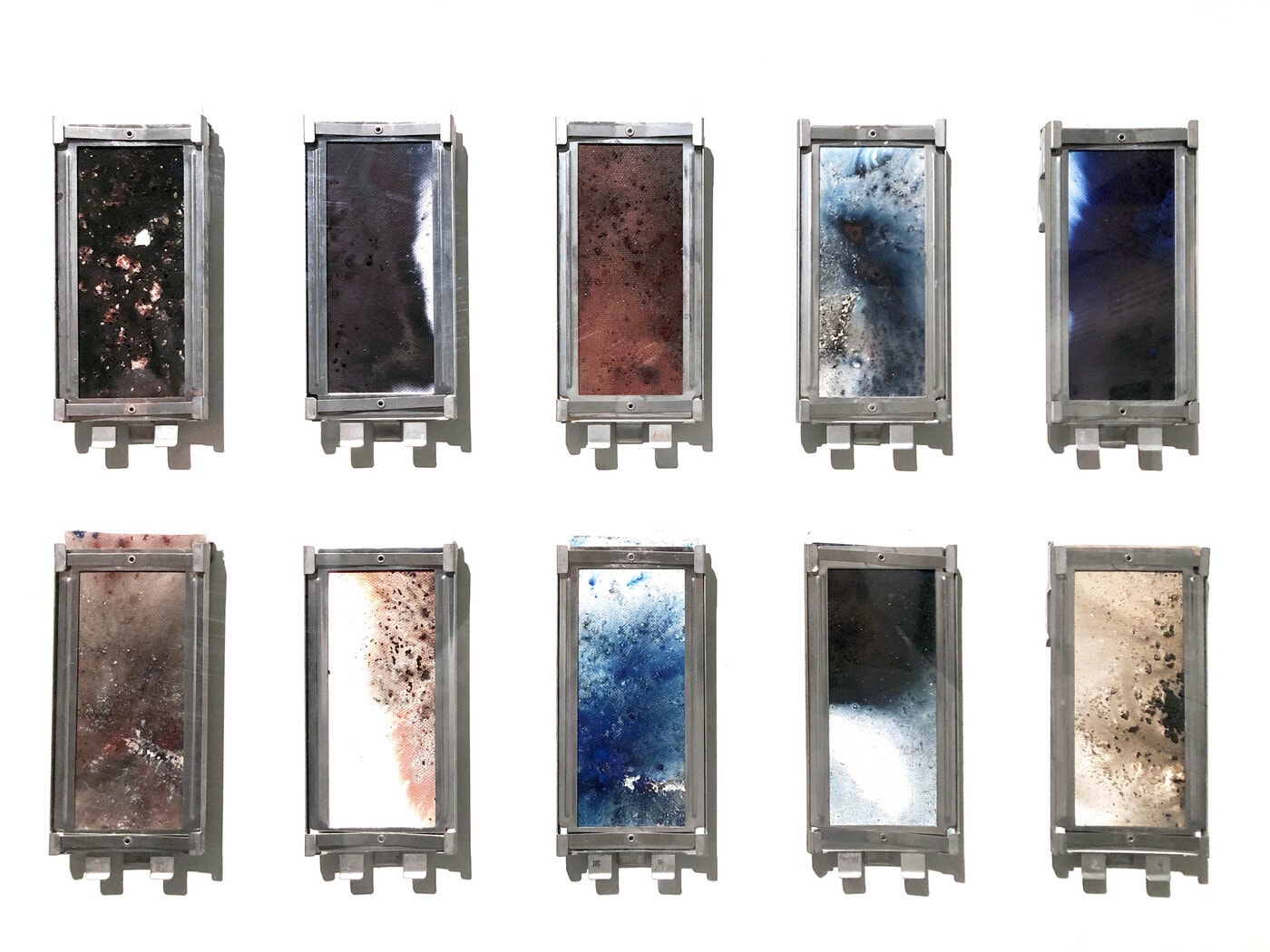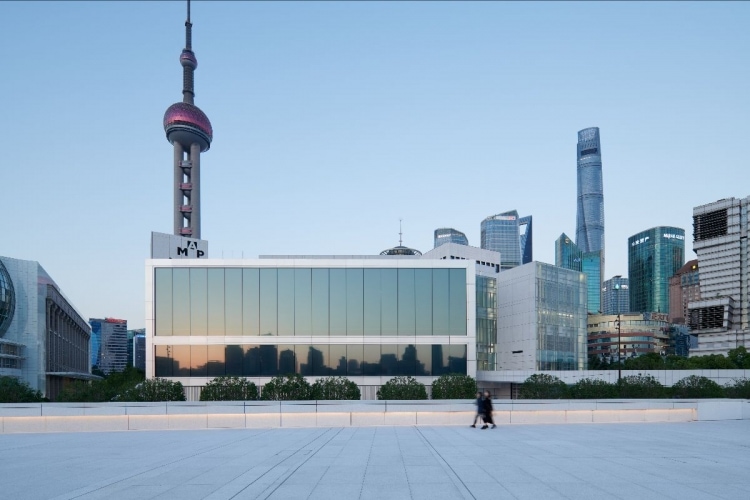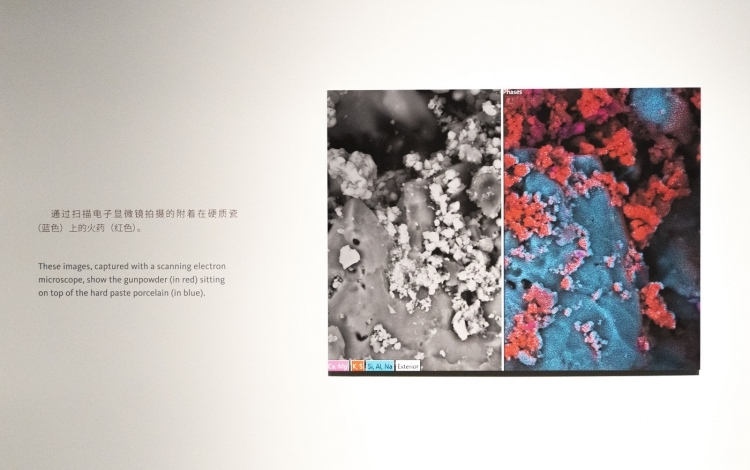The exhibition of Cai Guo-Qiang’s work, the renowned and award-winning artist of the fireworks
MAP, Museum of Art Pudong, is the new museum designed by Ateliers Jean Nouvel, just inaugurated, on the 8th of July 2021. It aspires to become a new landmark of Shanghai’s cultural landscape and a platform for international exchange of arts and culture. I couldn’t miss its opening and, albeit my interest was manly addressed to the museum itself, I ended up hypnotised by the exhibition of Cai Guo-Qiang’s work, the renowned and award-winning artist of the fireworks.
Cai Guo-Qiang studied stage design at the Shanghai Theatre Academy, and his work has since crossed multiple mediums within art including drawing, installation, video, and performance.
What made of him a world acclaimed artist is its work with controlled and designed “explosions”: motivated by a compelling interest for novelty and innovation, he began to experiment with gunpowder in his hometown Quanzhou, in China, and continued exploring its properties while living in Japan from 1986 to 1995, which led to the development of his signature outdoor explosion events.
In front of his works, you really feel the power of the explosion, from the detonation to the remains on canvas or any other surfaces he uses. The understanding of his aim is immediate: he uses a traditional material and process, like the Chinese fireworks, to give birth to an innovative, original process which expresses all the natural, spiritual and physical power or the art which dialogues with the metaphysical, such as the cosmos energy, the history, such as the Western and Eastern art evolution and the society, such as its contemporary issues. The explosion is an act of demolition for reinvention and reinterpretation, is a metaphor of mind openness and a representation of the power of Nature.
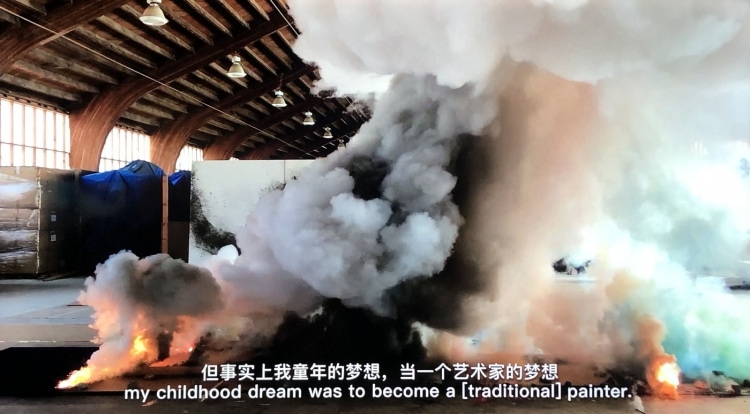
Cai Guo-Qiang, Odyssey and Homecoming exhibition, Video demonstrating the process of detonation, Museum of Art Pudong 2021
His trademark artistic process consists in intricately patterning gunpowder and exploding it on canvas: a fiery event that leaves painterly residues. The conceptual force of the deflagration consists in transforming the precise and rigid patterns the artist draws into something else, where colours and powder recombine and coalesce to advance cultural exchange and shared understanding beyond nationality. The artworks present a new global vision for the history of art and imbue painting with a reinvigorated capacity to engage with contemporary issues, to fight against division and isolation.
The exhibition at MAP, Odyssey and Homecoming, features 119 of Cai’s signature gunpowder paintings and other works, including his widely acclaimed first-ever VR work Sleepwalking in the Forbidden City.

Cai Guo-Qiang, Sleepwalking in the Forbidden City, for the exhibition Odyssey and Homecoming exhibition, Museum of Art Pudong 2021
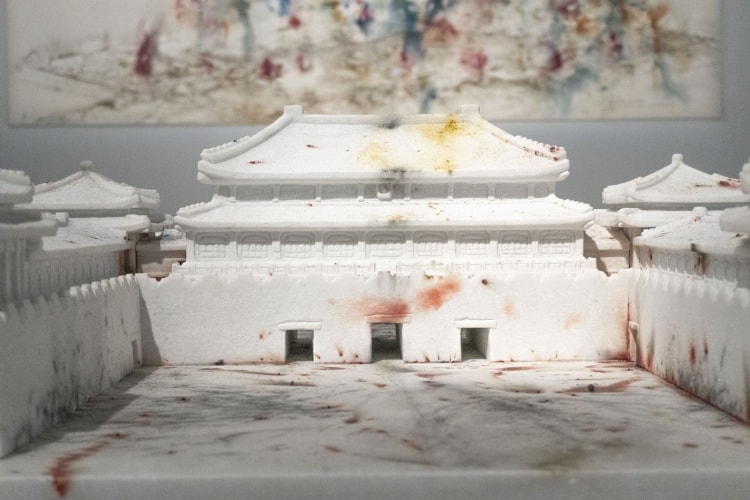
Cai Guo-Qiang, Sleepwalking in the Forbidden City, for the exhibition Odyssey and Homecoming exhibition, Museum of Art Pudong 2021
The first work to capture the attention is the big installation in the main hall, at the entrance. As a special new commission for Odyssey and Homecoming, Cai created the site-specific, kinetic light installation Encounter with the Unknown for the monumental X Hall at MAP, which measures over 30 meters tall and with a floor area of 17 square meters. <<A spectacle inspired by the nature-based cosmology of the Mayan civilization, Encounter with the Unknown weaves together images from stories and myths of humans who “defied gravity” and “embraced the cosmos,” forming a tapestry of cosmologies from different civilizations. The installation takes the form of hand-crafted Mexican castillo fireworks, combining a rustic structure with the technology of computer-operated “light drawings” to create a dynamic, multidimensional image filled with wonder. The work is simultaneously a spacetime capsule and a “cosmic tree” that connects the ancient with the modern and the familiar with the foreign. Both in its concept and form, the work closely complements the “four-dimensional space-time” design concept proposed by the Museum’s architect and Cai’s vision of transforming this space into an artist’s laboratory. >> (quote from the press release)

Cai Guo-Qiang, Encounter with the Unknown, for the exhibition Odyssey and Homecoming exhibition, Museum of Art Pudong 2021
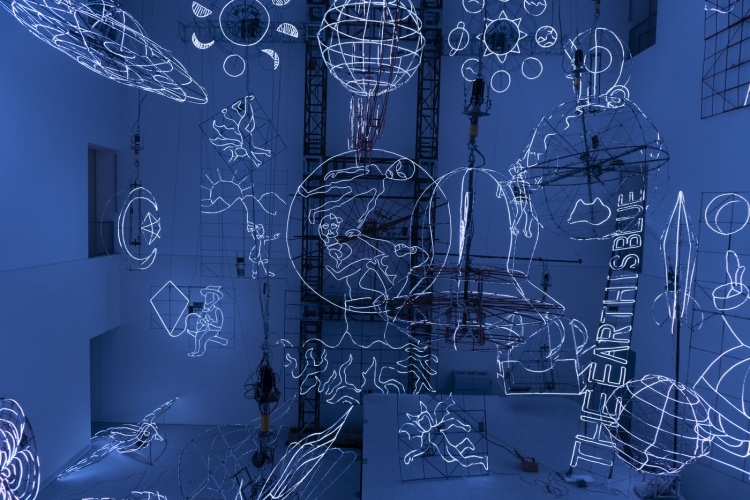
Cai Guo-Qiang, Encounter with the Unknown, for the exhibition Odyssey and Homecoming exhibition, Museum of Art Pudong 2021
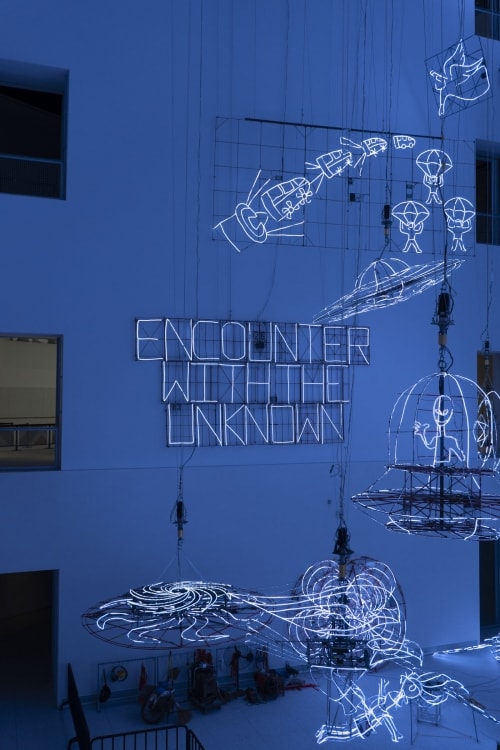
Cai Guo-Qiang, Encounter with the Unknown, for the exhibition Odyssey and Homecoming exhibition, Museum of Art Pudong 2021
The works in the exhibition represent Cai’s research, exploration, and voyage across the globe, recreating his Individual’s Journey Through Western Art History project for audiences in China. “Odyssey” refers precisely to this journey, featuring artworks from his solo exhibitions in world-renowned museums, in which he engages with the essence of Western art and civilization embodied within those institutions. He dialogued with classical Greek and Roman art in Pompeii and the National Archaeological Museum of Naples, the Italian Renaissance at the Uffizi Galleries in Florence, the Spanish Golden Age and Baroque Art at the Prado Museum in Madrid, Russian Socialist Realism at the Pushkin Museum in Moscow, Modernism at the Solomon R. Guggenheim Museum in New York, and the early roots of Modern art in Cézanne's hometown of Aix-en-Provence, in addition to ongoing trips to trace Medieval art history.

Cai Guo-Qiang, Dialogue with Baroque Art and the Spanish Golden Age, for the exhibition Odyssey and Homecoming exhibition, Museum of Art Pudong 2021
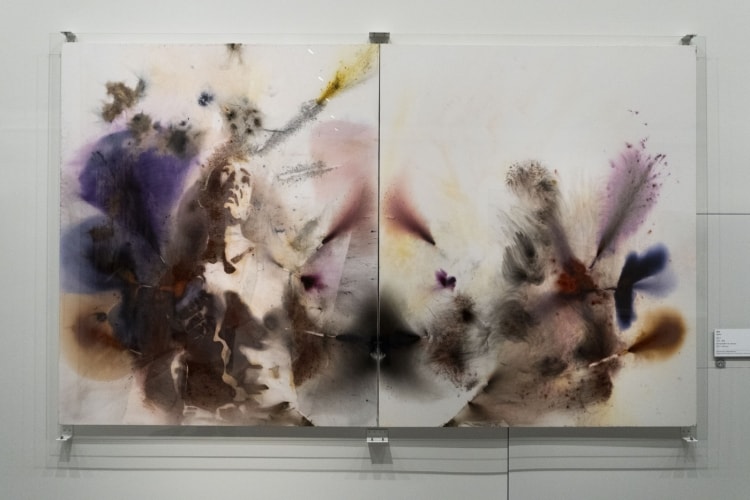
Cai Guo-Qiang, Selfie, 2017. Section Dialogue with Baroque Art and the Spanish Golden Age, for the exhibition Odyssey and Homecoming exhibition, Museum of Art Pudong 2021
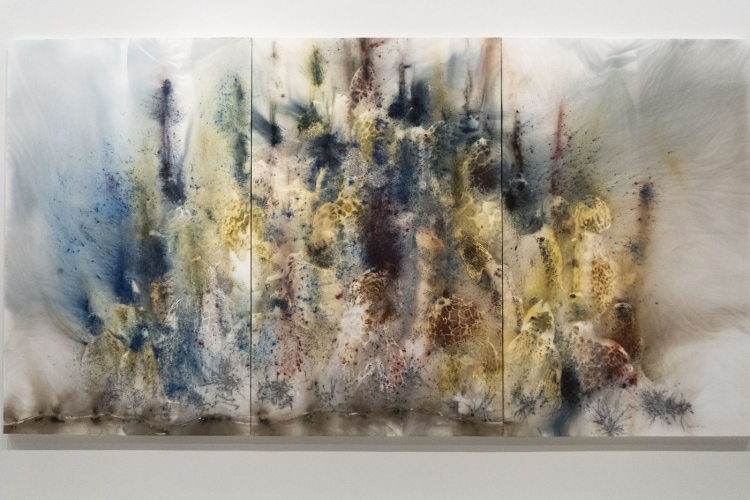
Cai Guo-Qiang, Mountain in Heat, 2016. Section Dialogue with Baroque Art and the Spanish Golden Age, for the exhibition Odyssey and Homecoming exhibition, Museum of Art Pudong 2021

Cai Guo-Qiang, Craters Made by Humans for Their Own Planet: Pourrières, 1990. Section Dialogue with Cézanne, for the exhibition Odyssey and Homecoming exhibition, Museum of Art Pudong 2021
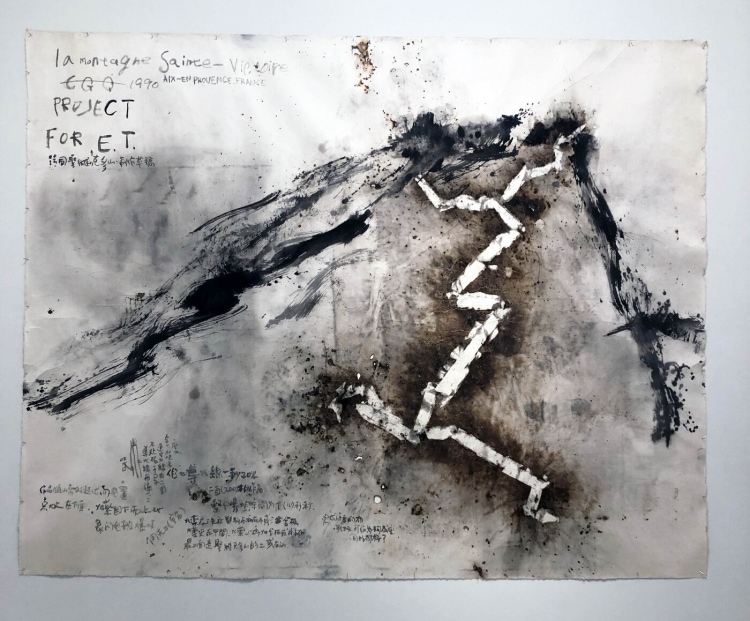
Cai Guo-Qiang, Ascending Dragon: Project for Extraterrestrials No.2, 1989. Section Dialogue with Cézanne, for the exhibition Odyssey and Homecoming exhibition, Museum of Art Pudong 2021
The other half, “Homecoming,” debuts new works that encompass aspects of traditional Chinese art and culture as well as the cosmos as his eternal homeland.
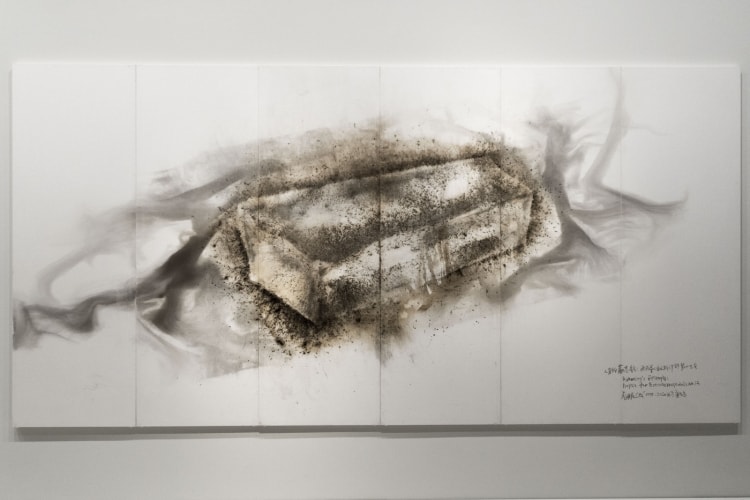
Cai Guo-Qiang, Humanity’s Epitaph: Project for Extraterrestrials No.13, 2020. Section Dialogue with the Cosmos, for the exhibition Odyssey and Homecoming exhibition, Museum of Art Pudong 2021
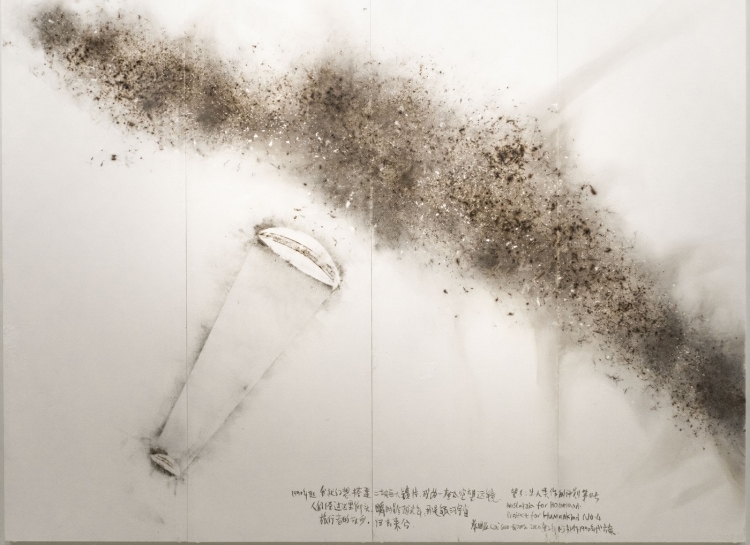
Cai Guo-Qiang, Nostalgia for Homeland: Project for Humankind No.4, 2020. Section Dialogue with the Cosmos, for the exhibition Odyssey and Homecoming exhibition, Museum of Art Pudong 2021
Besides the forceful and beauty of his artworks, I was impressed by his research and experiments to make a new expressive, creative and controlled material out of gunpowder.
The fourth floor showcases A Material Odyssey, a special exhibition curated by the Getty Conservation Institute in Los Angeles. This Institute is dedicated to furthering the preservation and conservation of visual arts. Its state-of-the-art scientific laboratories include many instruments capable of analysing materials used in works of art, as well as attempting to predict their aging properties. In 2016 the Getty Conservation Institute (GCI) embarked on a large-scale study of the materials and processes of Cai’s oeuvre. Through the lenses of the chemical and physical make-up of his work, the study discusses the relevant conservation questions and reflects on Cai’s career evolution. Cai is the first living artist chosen for this research series. Other artists include Willem de Kooning and Lucio Fontana. A book of The Artist’s Materials series will publish the findings of the study.

Cai Guo-Qiang, Gunpowder Drawing No.8-27. Section A Material Odyssey, for the exhibition Odyssey and Homecoming exhibition, Museum of Art Pudong 2021

Cai Guo-Qiang, The Artist’s Palette, test pieces made by the artist with different types of gunpowder he uses. Section A Material Odyssey, for the exhibition Odyssey and Homecoming exhibition, Museum of Art Pudong 2021
The exhibition presents some of the key finding from Getty’s research, with a focus on gunpowder. It explores the medium’s nature and properties, chronicles its use by the artist and even peers into the future by studying the aging properties of gunpowder and pyrotechnics. One interesting study is about the colors. In works of art, colors might fade and cracks might appear. Artists are often concerned with their legacy, and how their art might alter in the future. Researchers at Getty were able to explore this question as part of the overall study into the materials that Cai utilizes in his art, using tests prepared by Cai for this purpose.

Cai Guo-Qiang, test pieces made by the artist with different types of gunpowder to assess their sensitivity to light. Section A Material Odyssey, for the exhibition Odyssey and Homecoming exhibition, Museum of Art Pudong 2021
I found this part of the exhibition extremely interesting, opening paves for new modes to narrate and divulgate art. It is a very contemporary way to presents the richness of interdisciplinary connections often hidden behind a piece of art: the chemistry, the physics, the sociology, and so on. In this case, the pyrotechnics too.

 日本語
日本語 English
English
